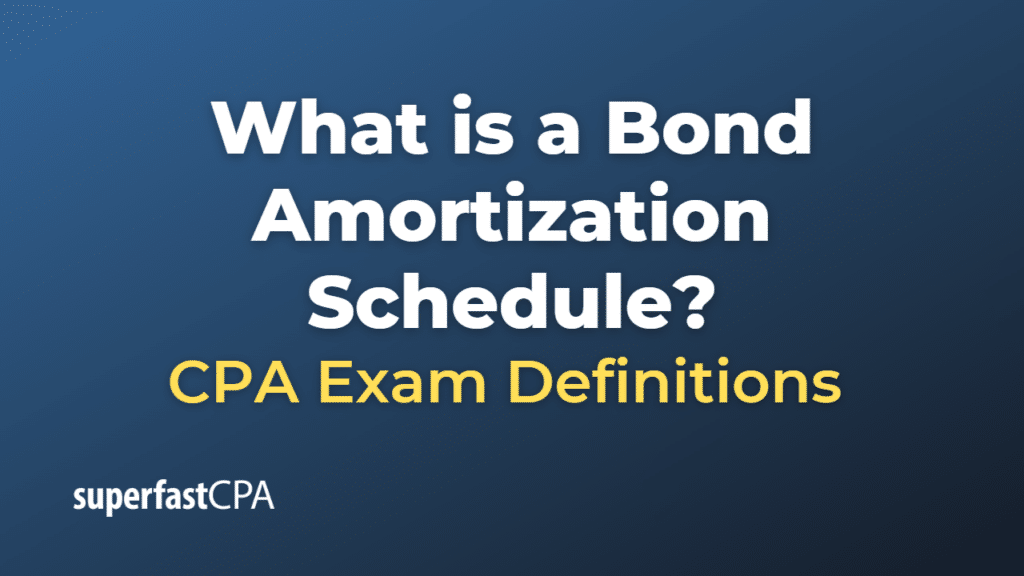Bond Amortization Schedule
A bond amortization schedule is a table that outlines the periodic interest payments and principal repayments for a bond over its life, from issuance to maturity. The schedule helps bondholders and issuers understand the cash flows associated with the bond, including the interest expense for the issuer and the interest income for the bondholder.
A bond amortization schedule typically includes the following information:
- Period: The time intervals at which interest payments are made, usually semiannually or annually.
- Beginning principal balance: The outstanding principal balance of the bond at the start of each period.
- Interest payment: The amount of interest paid during each period, calculated as the product of the bond’s principal balance, the annual interest rate (coupon rate), and the fraction of the year for which interest is paid (e.g., 0.5 for semiannual payments).
- Principal repayment: The portion of the bond’s face value that is repaid during each period. For a standard bond, the entire principal is repaid at maturity, with no principal repayments during the life of the bond. However, for amortizing bonds, a portion of the principal is repaid along with interest payments during each period, gradually reducing the outstanding principal balance.
- Ending principal balance: The outstanding principal balance of the bond at the end of each period, calculated as the beginning principal balance minus the principal repayment.
It’s important to note that a bond amortization schedule is more relevant for amortizing bonds, which have scheduled principal repayments throughout their life, rather than standard bonds, which pay only interest during their life and repay the entire principal at maturity. However, for standard bonds, a bond amortization schedule can still be useful for tracking periodic interest payments and the remaining principal balance over time.
Example of a Bond Amortization Schedule
Let’s consider a hypothetical example of a $10,000 bond with a 5% annual coupon rate and a 5-year maturity. The bond pays interest semiannually, which means the interest payments will be made every six months. We’ll create a simple bond amortization schedule for this bond. Since this is a standard bond, the entire principal is repaid at maturity, with no principal repayments during the life of the bond.
| Period | Beginning Principal Balance | Interest Payment | Principal Repayment | Ending Principal Balance |
|---|---|---|---|---|
| 1 | $10,000 | $250 | $0 | $10,000 |
| 2 | $10,000 | $250 | $0 | $10,000 |
| 3 | $10,000 | $250 | $0 | $10,000 |
| 4 | $10,000 | $250 | $0 | $10,000 |
| 5 | $10,000 | $250 | $0 | $10,000 |
| 6 | $10,000 | $250 | $0 | $10,000 |
| 7 | $10,000 | $250 | $0 | $10,000 |
| 8 | $10,000 | $250 | $0 | $10,000 |
| 9 | $10,000 | $250 | $0 | $10,000 |
| 10 | $10,000 | $250 | $10,000 | $0 |
In this example, the bondholder receives $250 in interest payments every six months (5% of $10,000, divided by 2 for semiannual payments). Over the 5-year life of the bond, the bondholder receives a total of $2,500 in interest payments ($250 * 10 periods). At the end of the 5-year term (period 10), the issuer repays the entire principal amount of $10,000.
Keep in mind that this example is for a standard bond. If the bond were an amortizing bond with scheduled principal repayments, the bond amortization schedule would include principal repayments during each period, gradually reducing the outstanding principal balance.













